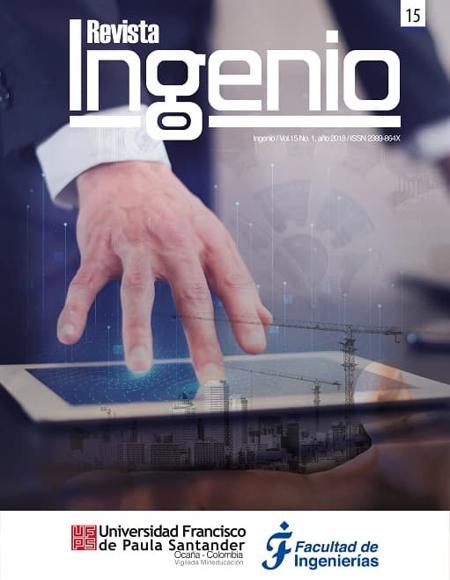Analysis of labor productivity for the construction of a single-family home in the municipality of Ocaña Norte de Santander
Análisis de la productividad de mano de obra para la construcción de una vivienda unifamiliar en el municipio de Ocaña, Norte de Santander
Main Article Content
Productivity is mathematically defined as the quantity produced from an activity over the work done in it; Progress has been made in many studies at the international and national level where optimization has been achieved in terms of labor productivity for the different categories of work, an investigation carried out by the productivity management system of the Pontifical University of Chile showed that Productive Work was (TP 60%), Contributory Work (TC 25%) and Non-Contributive Work (TNC 15%). This research contemplated the analysis of the labor productivity of a single-family home; identifying the activities with the greatest economic impact of the project through a quality tool, taking random samples for the activities under study using the infinite population formula and applying the five-minute technique to each activity; The data were tabulated using descriptive statistics, yielding the following results: Productive Work was (TP 56%), Contributory Work (TC 29%) and Non-Contributory Work (TNC 15%). Some work categories were not within the optimal, this was due to the contributory tasks which were not optimized in the construction process.
Downloads
Publication Facts
Reviewer profiles N/A
Author statements
Indexed in
- Academic society
- Universidad Francisco de Paula Santander
- Publisher
- Universidad Francisco de Paula Santander
Article Details
Gómez, J. M., & Bottini, M. Á. N. “Productividad de las empresas de la zona extractiva minera-energética y su incidencia en el desempeño financiero en Colombia.” Estudios gerenciales, vol.33(145), pp. 330-340, 2017. Doi:https://doi.org/10.1016/j.estger.2017.11.002 DOI: https://doi.org/10.1016/j.estger.2017.11.002
Serpell, A. “Productividad en la construcción”. Revista Ingeniería de Construcción, vol. 1(1), pp.53-59, 2011.
Botero Botero, L. F. “Análisis de rendimientos y consumos de mano de obra en actividades de construcción.” Revista Universidad EAFIT, vol.38(128), pp. 9-21. 2002.
Aguilar, G. M., & Hernández, T. C. “Seguimiento de la productividad en obra: técnicas de medición de rendimientos de mano de obra.” Revista UIS ingenierías, vol. 6(2), pp. 45-59, 2007.
Díaz, H. P., Rivera, O. G. S., & Guerra, J. A. G. “Filosofía Lean Construction para la gestión de proyectos de construcción. Avances: Investigacion en Ingeniería,” vol.11(1), pp. 32-53. 2014. DOI: https://doi.org/10.18041/1794-4953/avances.1.298
Contreras, C., Edwards, G., & Mizala, A. “La productividad científica de economía y administración en Chile: un análisis
comparativo.” Cuadernos de economía, vol. 43(128), pp. 331-354. 2006.
López, M. D. R., Grajales, M. H., &Corrales, M. E. V. “Lean construction–LC bajo pensamiento Lean”. Revista Ingenierías Universidad de Medellín, vol.16(30), pp.115-128, 2017. Doi: https://doi.org/10.22395/rium.v16n30a6 DOI: https://doi.org/10.22395/rium.v16n30a6
Howell, G. A. What is lean construction-1999. In Proceedings IGLC, vol. 7, p. 1,July, 1999.
Mínguez, J. B. P., & Moreno, A. S. (2004). Calidad del diseño en la construcción. Ediciones Díaz de Santos.
Carro, R., & González Gómez, D. A. (2012). Productividad y competitividad.
Borjas, C. M. B. “Ley de pareto aplicada a la fiabilidad”. Ingeniería mecánica, vol.8(3), pp.1-9, 2005.
Vargas Biesuz, B. E. “Tópicos de inferencia estadística: El método inductivo y el problema del tamaño de la muestra. Fides et Ratio”, Revista de Difusión cultural y científica de la Universidad La Salle en Bolivia, vol.7(7),pp. 86-92, 2014.









